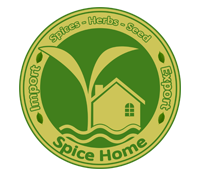In recent years, there has been a growing interest in herbal remedies and alternative medicine, driven by a desire for natural treatments and a skepticism of conventional pharmaceuticals. This essay explores the historical context, scientific basis, efficacy, regulation, and future potential of herbal remedies and alternative medicine, providing a comprehensive overview of this complex and multifaceted field.

Historical Context
Herbal remedies and alternative medicine have deep roots in human history, spanning diverse cultures and civilizations. Traditional Chinese Medicine (TCM), Ayurvedic medicine from India, Native American herbal practices, and European folk medicine are just a few examples of systems that have utilized plants for healing purposes for centuries. These systems were often developed through trial and error, with knowledge passed down through generations.
In ancient societies, herbal medicine was the primary form of healthcare. Texts such as the Chinese “Shennong Ben Cao Jing” and the Indian “Charaka Samhita” document extensive knowledge of herbs and their uses. European herbalism saw significant contributions from figures like Hippocrates and Galen, whose works influenced medical practices for centuries.
Scientific Basis
The resurgence of interest in herbal remedies has led to increased scientific investigation into their efficacy and mechanisms of action. Many modern pharmaceuticals are derived from compounds originally found in plants. For instance, aspirin was developed from salicin, a compound found in willow bark, and the cancer drug paclitaxel was derived from the Pacific yew tree.
Scientific studies have confirmed the efficacy of certain herbal remedies. For example, St. John’s Wort has been shown to be effective in treating mild to moderate depression. Similarly, echinacea is widely used for its potential to reduce the severity and duration of colds, and turmeric is researched for its anti-inflammatory properties due to the active compound curcumin.
However, not all herbal remedies have been scientifically validated, and some may interact with conventional medications or have side effects. The complexity of plant chemistry and variability in preparation methods can pose challenges for standardization and rigorous study.
Efficacy and Use
The efficacy of herbal remedies varies widely depending on the herb, condition, and individual response. Some herbs have strong evidence supporting their use, while others rely more on traditional knowledge and anecdotal evidence.
Popular herbs like ginger, garlic, and peppermint are widely used for digestive issues, while valerian and chamomile are sought for their calming effects. Ginseng is renowned for its purported energy-boosting and immune-enhancing properties. The use of herbal remedies often involves holistic approaches, considering diet, lifestyle, and mental well-being alongside the use of herbs.
Alternative medicine encompasses a broad range of practices, including acupuncture, homeopathy, chiropractic care, and naturopathy. These practices often emphasize the body’s ability to heal itself and seek to treat the root causes of illness rather than just symptoms.
Regulation and Standardization
The regulation of herbal remedies and alternative medicine varies significantly across the globe. In the United States, the Food and Drug Administration (FDA) classifies herbal supplements as dietary supplements, which means they are not subject to the same rigorous testing as pharmaceuticals. This can lead to variability in the quality and potency of herbal products.
In Europe, the European Medicines Agency (EMA) provides more stringent regulations, requiring certain standards of evidence for the safety and efficacy of herbal medicines. Traditional herbal medicinal products must be registered under the Traditional Herbal Medicinal Products Directive (THMPD).
The lack of standardization and regulation in some regions can lead to issues with contamination, adulteration, and mislabeling of herbal products. Consumers are advised to seek products from reputable sources and consult healthcare professionals when integrating herbal remedies into their treatment plans.
Future Potential
The future of herbal remedies and alternative medicine is promising, with ongoing research aimed at unlocking the therapeutic potential of plants. Advances in biotechnology and pharmacognosy (the study of medicinal drugs derived from plants) are paving the way for new discoveries.
Integrative medicine, which combines conventional and alternative approaches, is gaining acceptance. This model seeks to provide patient-centered care, incorporating the best of both worlds to optimize health outcomes. The growing emphasis on personalized medicine also aligns with the holistic and individualized nature of herbal and alternative treatments.
Public interest in natural and sustainable health practices is likely to continue driving demand for herbal remedies. As scientific understanding and regulatory frameworks improve, the safety and efficacy of these treatments will become better established, fostering greater trust and integration into mainstream healthcare.
Conclusion
Herbal remedies and alternative medicine represent a rich and diverse field with deep historical roots and significant contemporary relevance. While some remedies have strong scientific backing, others require further research to validate their efficacy and safety. Regulation and standardization remain critical challenges, but advances in science and a growing preference for natural health solutions bode well for the future. By bridging traditional knowledge with modern research, the potential of herbal remedies and alternative medicine to enhance healthcare and well-being is immense.
